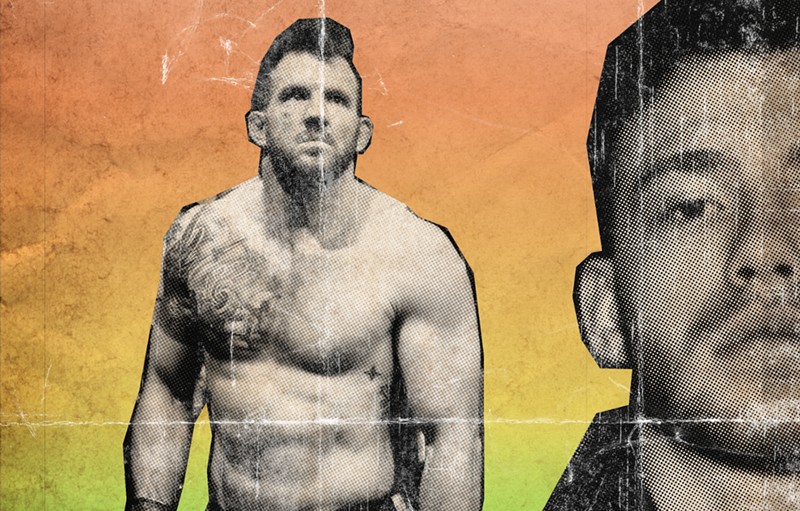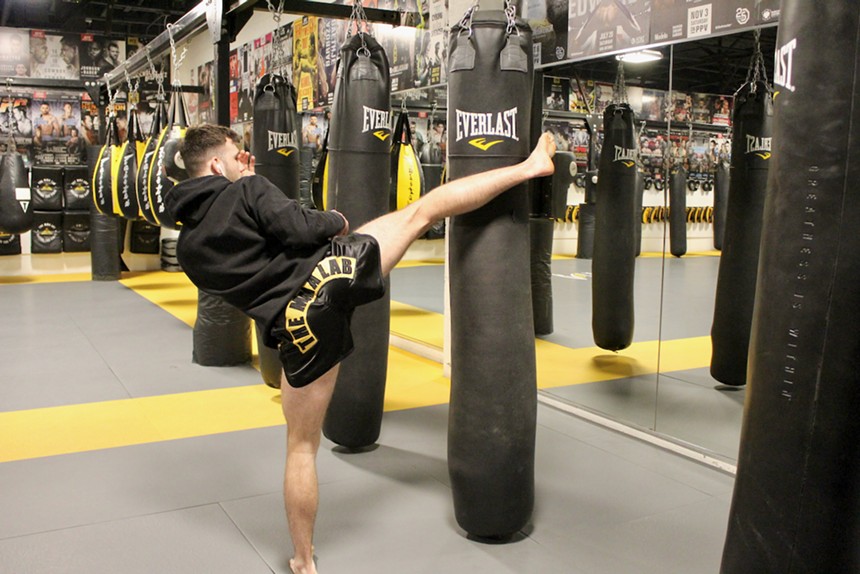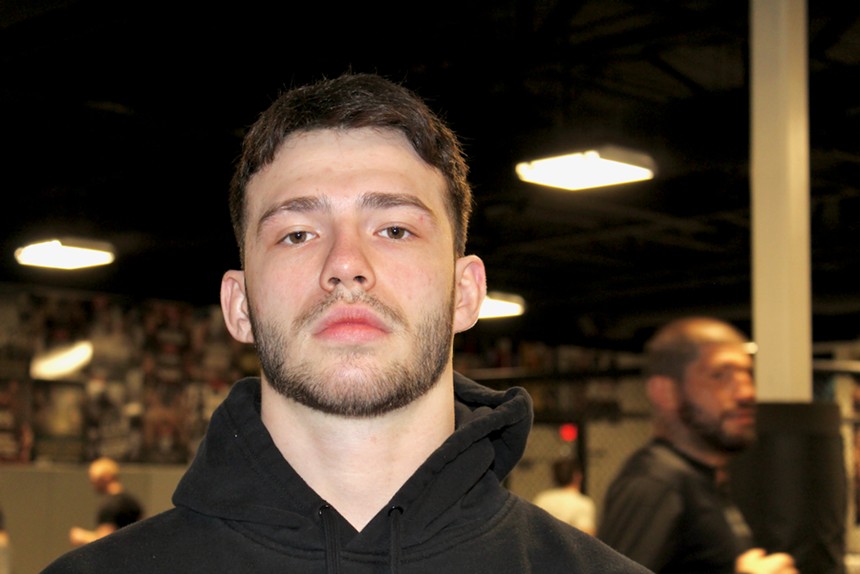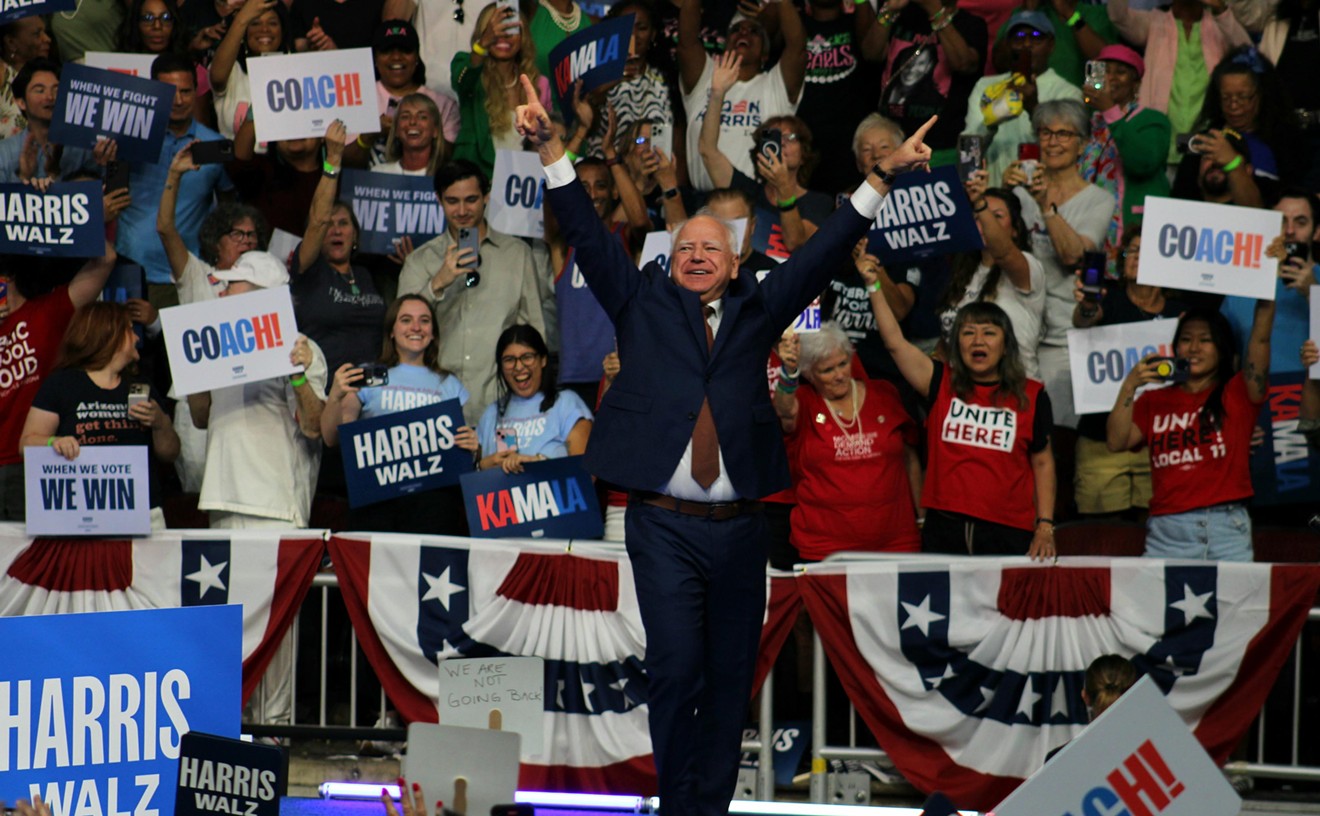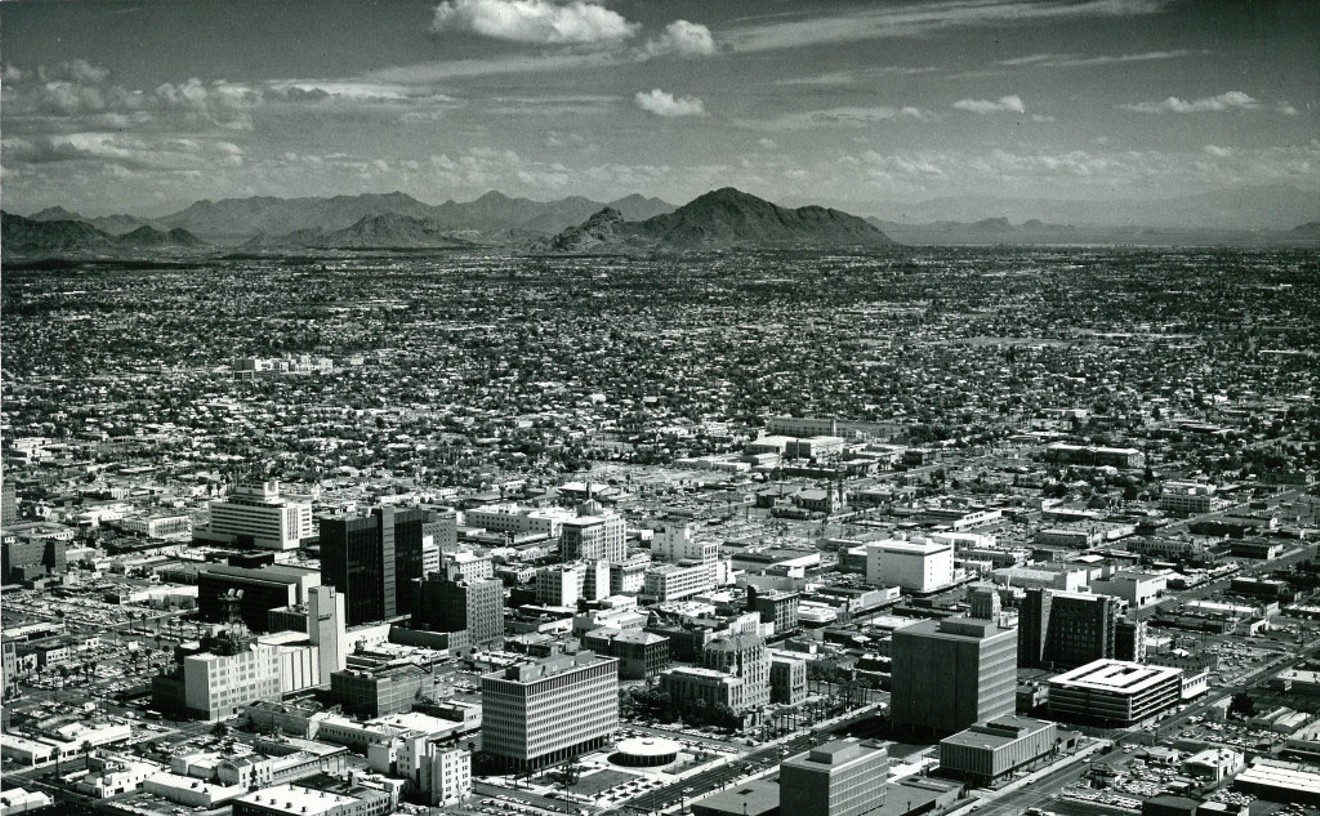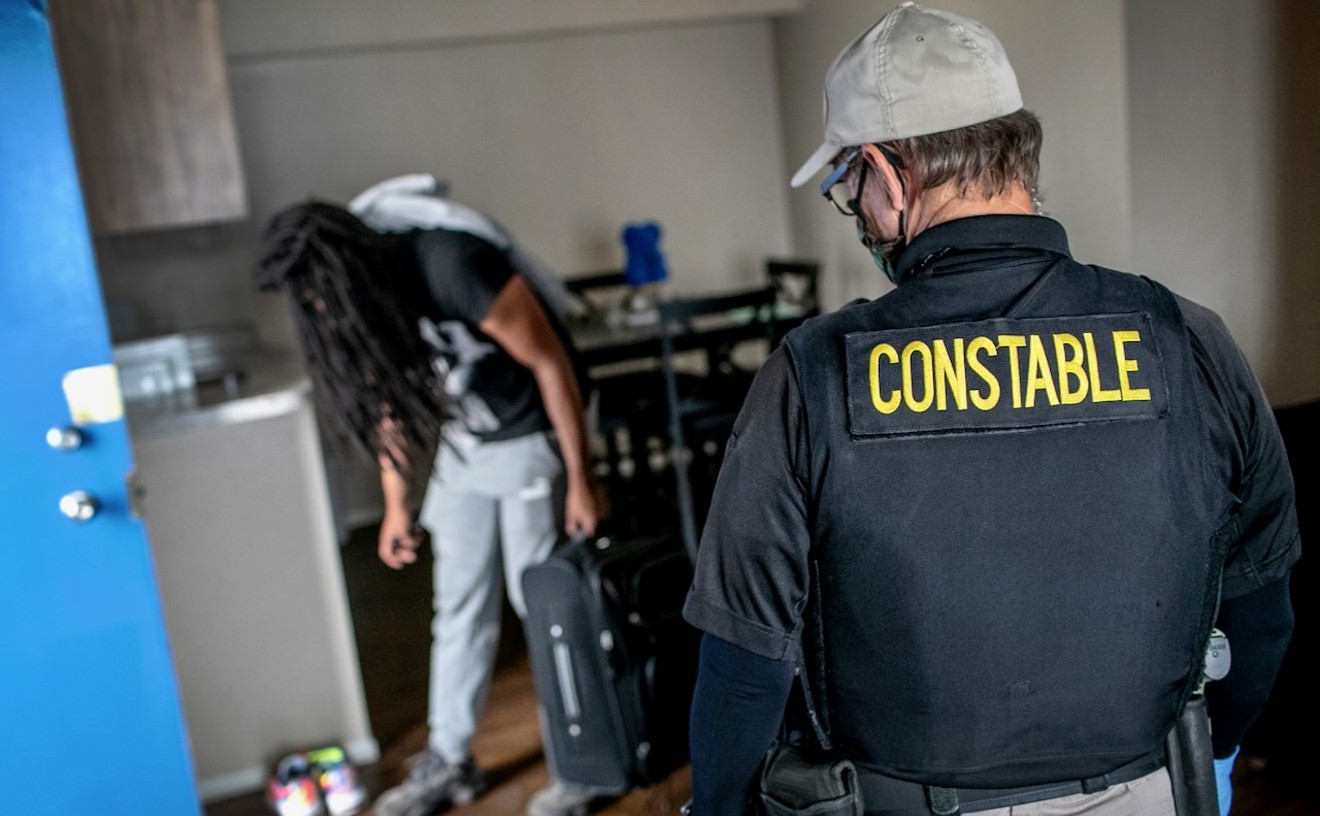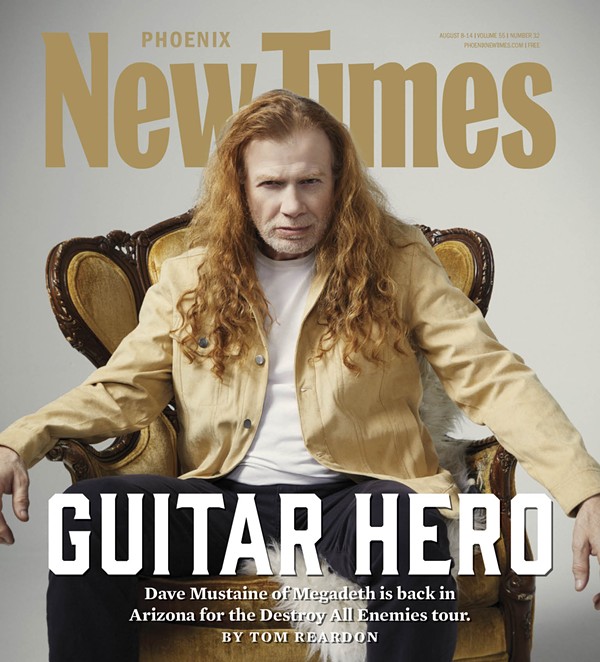The 20-year-old mixed martial arts fighter from Phoenix wipes his brow with a gloved hand, the red band around his wrist emblazoned with the letters “AZ.” He just took down undefeated Tucson fighter Deshawn White by a split decision at the Celebrity Theatre in southeast Phoenix.
“Phoenix is my home,” Marghitas told Phoenix New Times after the fight last August. “When I become the UFC champion, I want to bring that belt home to Phoenix.”
If he does, he won’t be the first. Nor the second, nor the third. What Nashville is to country singers, and what Hollywood is to actors, Phoenix is to MMA fighters.
The Epicenter of Excellence
MMA is a global sport with ancient origins in Japan, Greece, and Brazil. But today, while fighters from Ultimate Fighting Championship — the largest MMA promotions company in the world, better known as UFC — represent more than 70 countries, it’s widely agreed that the U.S. is both the global hub for the sport and the country that has produced the most champions.And UFC, headquartered next door to Arizona in Las Vegas, has crowned more champions with ties to Arizona than any other state. The Grand Canyon State is punching above its weight amid a decade of unprecedented growth in the sport, and many of its prize fighters are cultivated right here in Phoenix.
MMA Sucka, which covers the industry as part of Toronto-based Last Word on Sports, says Arizona has “the best wrestlers in the country.” They include fighters such as Arizona State University legend Cain Velasquez, dubbed by Bleacher Report as “the best heavyweight in the world.”
Then there’s Phoenix-based Henry Cejudo, the only person to ever win an Olympic gold medal and a UFC title. There's also hot young prospect Sean O’Malley, the top bantamweight in the world who lives in Scottsdale.
Justin Gaethje was a two-time Arizona high school champion out of his tiny hometown in Graham County. He went on to become a UFC lightweight champion.
And don’t forget about Ryan Bader, the Phoenix-based former ASU standout and UFC fighter who’s currently the reigning Bellator Heavyweight Champion and its first two-belt champion. He’s considered by Black Belt magazine to be the greatest fighter out of Arizona, ever.
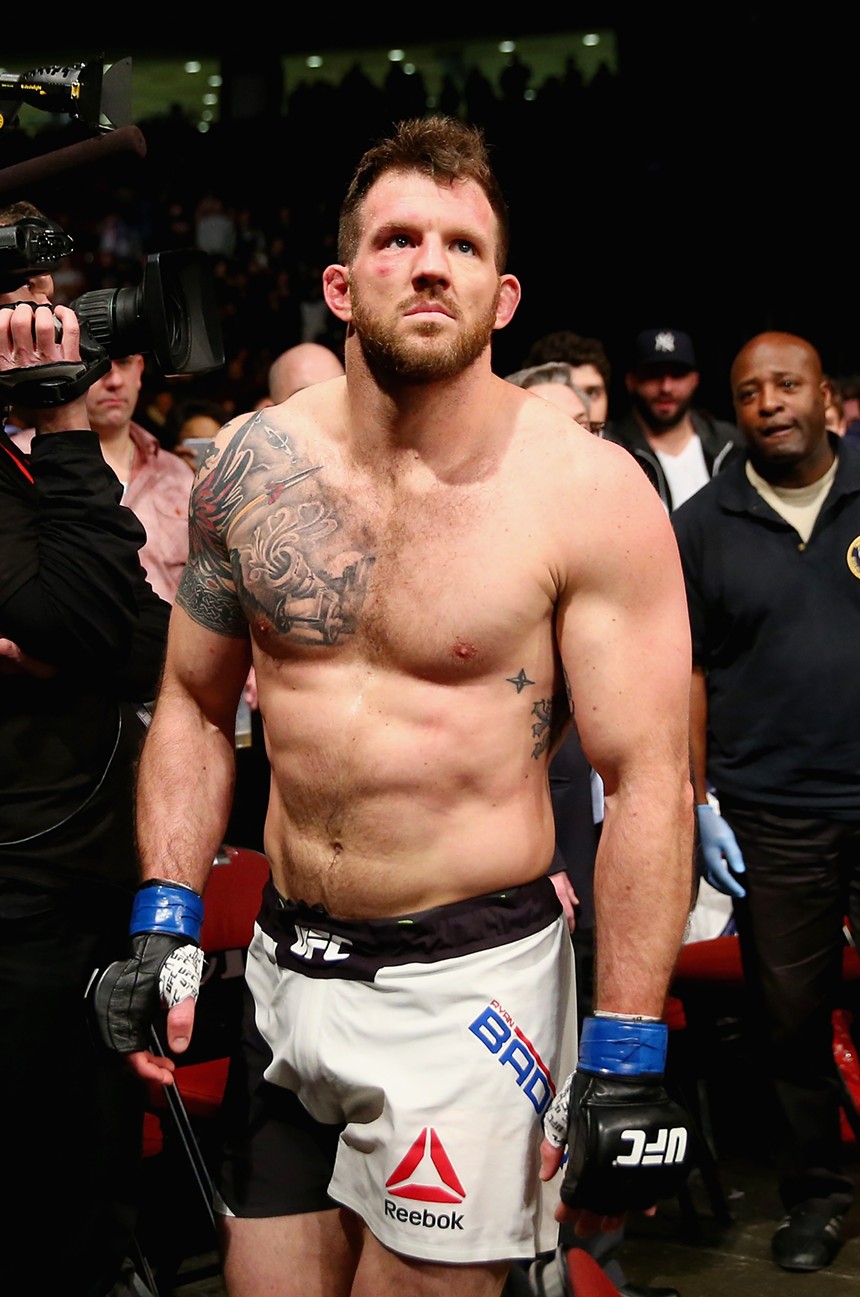
Ryan Bader is a Phoenix-based former ASU standout and UFC fighter who’s currently the reigning Bellator Heavyweight Champion.
Elsa / Getty Images
For Bader or Worse
Bader first defended his Bellator Heavyweight World Championship belt at the Footprint Center in Phoenix last year. In February, he successfully defended it again with a technical knockout versus Russian Fedor Emelianenko in Inglewood, California.“I love knowing that Arizona is represented in the MMA world,” Bader, 39, told New Times. “When I started off, it was a relatively young sport. To watch it grow to what it is today is incredible. I love watching Arizona succeed, not just myself.”
Fifteen years ago and fresh out of ASU, Bader worked a desk job answering phone calls. Feeling trapped on a path to nowhere, he gave up corporate life and turned to MMA. The gamble paid off. In his protracted career, “Darth Bader” has won more than four contests for each loss.
But Bader's origins are humble. He described “fighting for peanuts” all over Arizona early in his career, appearing on fight cards in Camp Verde and inside a barn in Globe — and even in a bull riding ring in Nogales, Mexico.
“It was the wild, wild west days of MMA,” Bader laughed, describing how he walked on foot from an Arizona motel across the international border to fight at a small Mexican rodeo.
At the time, Bader was teamed up with RUF MMA, a Native American-owned fight promoter that started in Phoenix nearly 20 years ago.
RUF MMA promoter Cj Pitman remembers Bader’s bullring days. “Bader choked out that guy out in Nogales,” he said.
Coming out of high school in Reno, Nevada, Bader was recruited by several colleges and was offered a full ride to the University of Oregon. But he “really fell in love with Arizona” on a 12th-grade trip to ASU and has been here ever since.
“Arizona is a perfect fit for me,” he said.
While on the ASU wrestling team, Bader shared the spotlight with a half-dozen other eventual MMA fighters, including Tempe-based UFC fighter Jesse Forbes. That collegiate connection got Bader hooked on MMA.
But a career in Phoenix means Bader has always been forced to take turns in the limelight. Not that it bothers the champion.
“I don’t worry about that stuff,” Bader said. “I had goals and continue to have them. I continue to focus on myself. There was never any jealousy or competition to be the Arizona guy.”
Bader partially credits himself with UFC’s booming growth in the U.S. in the last decade, which has seen viewership triple and brand value increase by 500 percent, according to Statista. UFC has been growing year over year since 2001.
“All of us on the biggest stage had a hand in growing the sport, especially here in Arizona,” Bader said. “You want to root for the guy coming out of your city, so when there are so many guys coming out of the Valley, you’ll have more fans.”
Next Up Out of Phoenix?
Like Bader at his age, Marghitas is currently promoted by RUF MMA. Before the August bout that earned him his 1-0 record, Marghitas entered the cage flanked by former UFC champion Benson Henderson, who also is based in Phoenix. Henderson holds the record for most UFC title defenses as a lightweight.
Marghitas was 8 years old when he met Henderson at the MMA Lab, a fighting gym located on Bell Road near Interstate 17 in Phoenix. The gym has produced a host of UFC studs over the years, including the top-rated bantamweight O’Malley, with whom Marghitas has trained since 2015.
The gym looks unassuming, nestled into a strip mall alongside a thrift store, a pizza joint, and a motel. But the gym’s head coach, John Crouch, says that the fighters who train there “are some of the best guys in the world.” And rightfully so.
Crouch explained his philosophy: Every day in the gym is like putting a penny in a piggy bank. Sometimes, it’s a shiny, freshly minted penny. Other times, it’s a blackened, grungy penny. But ultimately the pennies — or rather the fighters’ effort — are all worth the same, and that wealth builds over time.
Marghitas is piling his pennies well, Crouch says. The hungry young fighter tells us he spends as many as six hours a day in the gym, sparring and taking classes. When he gets home, he often jogs and hits the weight room.
“I train every single day. I show up every single day,” Marghitas said. “I will do whatever it takes to become the best in the world. And I will become the best in the world.”
Marghitas was born in Arizona to immigrant parents from Romania. His mother was six months pregnant when she won a visa lottery and arrived in Phoenix just in time for the birth of her youngest son.
The family “came here with nothing,” Marghitas said. His parents scraped by and opened a small home care business in Phoenix.
“They always inspired me to work even harder,” Marghitas said. “My mom and dad had to leave their mom and dad behind, but because of that sacrifice, they can see me go all the way to the top.”
His mother wanted to sign him up for dance classes, but Marghitas had other ideas. He started taking jiu-jitsu classes, which sparked his dream of becoming a UFC champion.
During his interview with New Times, Marghitas produces an old photo — it shows an elementary school-aged Marghitas grinning next to Henderson with a UFC championship belt draped across the table.
“I didn’t realize at the time that I was choosing the hardest sport in the world,” Marghitas said. “But now, I won’t consider doing anything else. I need this. I need this to live.”
Just one fight into his career, Marghitas has already cracked his ribs, sprained his wrist, and hurt his lower back so badly he couldn’t stand up straight. He says that by MMA standards, he’s “basically never been injured.”
Marghitas, now 21, is so dedicated to the sport that he doesn’t drink alcohol, smoke cigarettes, or smoke weed.
His second-ever match will come on May 19 at the Showroom at Wild Horse Pass in Chandler.
“I want to fight my entire career in Phoenix. Even when I’m done fighting, I’m still planning on living in Phoenix,” Marghitas said. “I love Arizona. I couldn’t imagine living everywhere else.”
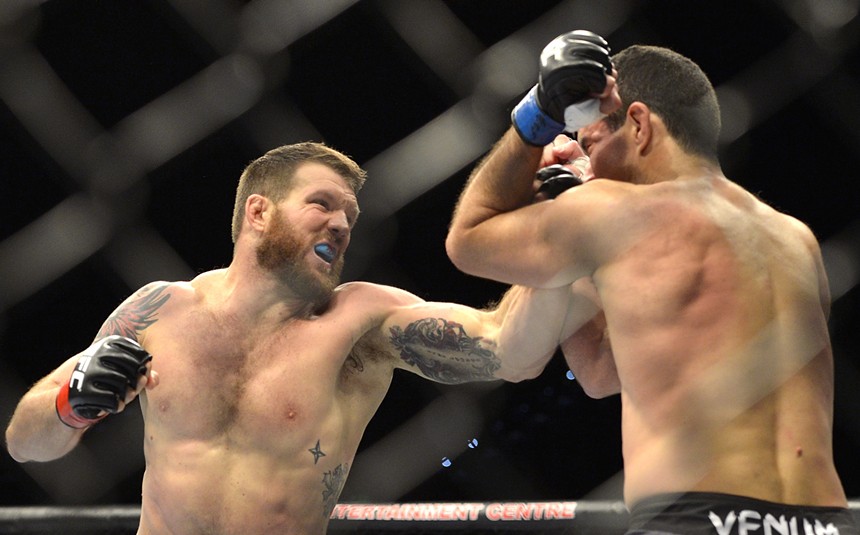
Phoenix's Ryan Bader punches Anthony Perosh during their UFC Fight Night Brisbane bout in 2013.
Bradley Kanaris / Getty Images
‘Best in the World’
According to a recent study from MiddleEasy, a top UFC news website based in Denver, Arizona is currently among the four “most UFC-obsessed states.”Researchers at the outlet analyzed Google search data from 2022 and discovered that more than a quarter-million people in the state searched for “UFC,” “UFC news,” and “UFC Fight Night” last year.
Not only is Arizona a breeding ground for generational MMA talent, but many firsts in the sport have happened here since the state government set up the Arizona Boxing & MMA Commission in 2010.
The state hosted the first-ever Bare Knuckle Fighting Championship event in 2011 and in 2018 became the first state to allow a UFC player to wear a turban during a fight when Arjan Bhullar did so in Glendale.
UFC now rakes in more than $1 billion annually, boasting a 21 percent average annual growth rate since 2005. A decade ago, UFC drew 173,000 viewers. In 2022, that number had increased to 259 million.
More than a decade ago, the Phoenix Business Journal correctly predicted that Arizona would become “a hotbed for MMA fighters” and a premier destination for MMA training nationwide.
“Phoenix is such a big hot spot. I credit the gyms for the level of talent we have coming out of Phoenix,” said Pitman, the local promoter. “We have world-renowned gyms here like the MMA Lab, which literally started this growth here.”
Pitman said that one of the biggest factors in this growth has been the acceptance of MMA as a sport. While fans of individual fighters still show out for matches, more and more general MMA fans are buying tickets every year.
“You see that league support with the Cardinals, the Suns, the Coyotes,” he said. “You have your football fans, your hockey fans. You didn’t used to have an MMA fan.”
Because MMA is attracting “actual sports fans” now, rather than fans of individuals, “the fanbase is getting bigger and bigger,” Pitman said.
Bader, the heavyweight champion, credits the growth to public education about the sport itself. “People used to think it was a barbaric sport,” he said. “Now, it has become more mainstream.”
Bader predicts the level of talent coming out of Phoenix will only continue to climb to unprecedented heights.
Growing up in Nevada in the 1990s, he played baseball and football because MMA simply didn’t exist.
“Unlike me, these kids have been doing it their whole lives,” Bader said. “They’re going to be so good by the time they’re 20, they’re going to elevate the whole sport. I’m just glad to be gone by that time.”
At his gym in Gilbert, Bader said there are more and more young children committing to becoming MMA fighters — with the dream of one day inking a contract with UFC.
Sound familiar?
“There are so many great UFC fighters here in Phoenix,” Marghitas said. “Honestly, we’re the best in the world.”

